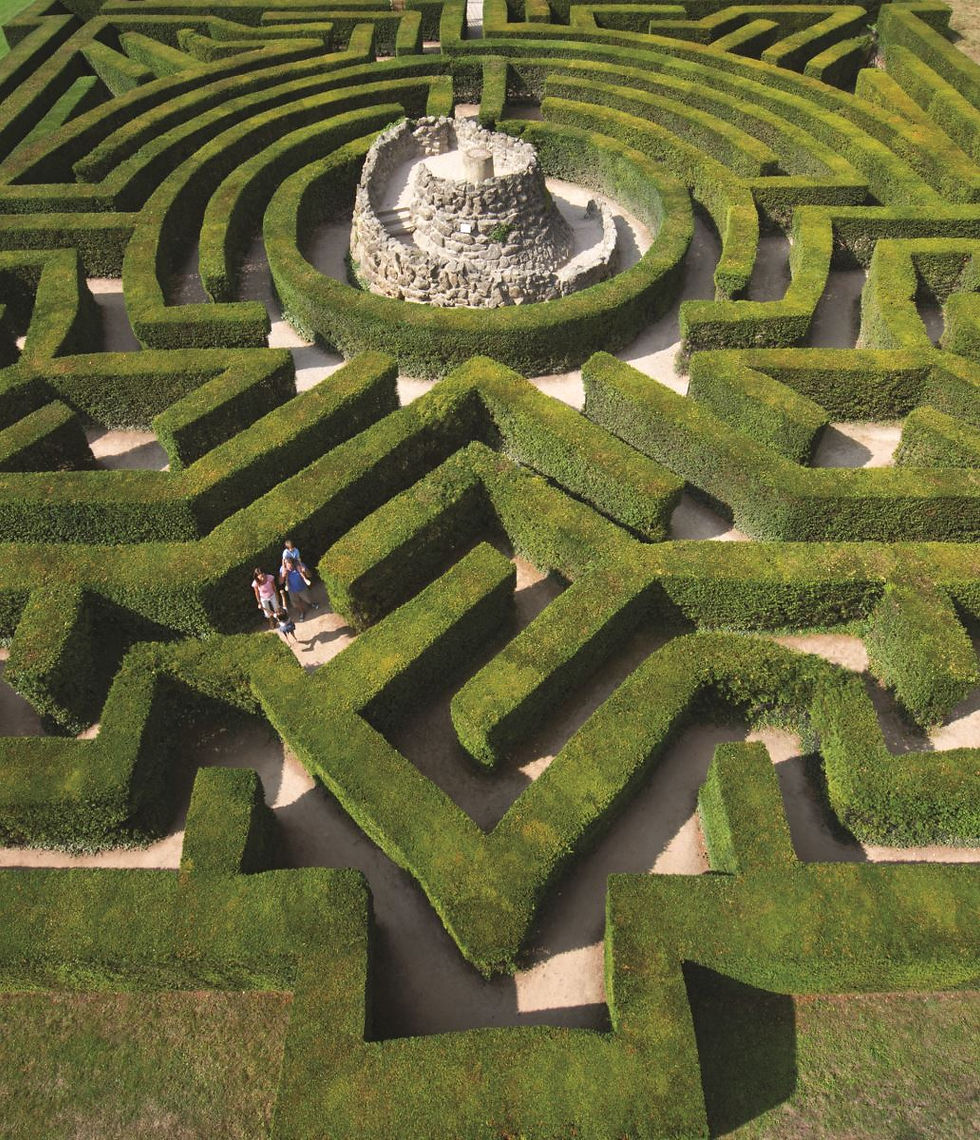Mazes: Ancient Puzzles Winding Through the Hedges of Time
- thebluerosestudio
- Nov 28, 2024
- 2 min read
Mazes have fascinated and challenged humanity for thousands of years, winding their way through gardens, myth, and mystery. From elaborate labyrinths to field mazes today, they have served as powerful symbols, thrilling games, and even places of meditation. Here’s a closer look at the origins, purpose, and creation of these intricate paths.

When and Where Did Mazes Start?
The history of mazes is ancient and storied, dating back nearly 4,000 years. One of the earliest known mazes appears in Greek mythology—the Labyrinth built by Daedalus to imprison the Minotaur, a monstrous creature in Crete. This was more than just a winding path; it was a place of deep symbolic meaning and a dangerous riddle for any who dared enter. Beyond Greece, ancient civilizations like Egypt and Rome used labyrinthine patterns as symbols in art, coins, and temples. However, the mazes we know today as physical structures—particularly hedge mazes—emerged in Renaissance Europe, where royals and nobles added them to their grand gardens as displays of power, intellect, and entertainment. By the 16th and 17th centuries, mazes became popular features of European estates, captivating guests with their complexity.

Why Did Mazes Start?
Originally, mazes and labyrinths had deeply symbolic purposes. In ancient times, they represented the journey of life, the complexity of fate, and spiritual or ceremonial paths. Walking a labyrinth was thought to be a journey of meditation and self-discovery, especially in religious contexts. By the Renaissance, mazes shifted from spiritual symbols to recreational puzzles, becoming a pastime for the elite. Hedge mazes were built as a test of wit and patience, a way to entertain guests at courtly gatherings. Today, mazes—especially seasonal corn mazes—are crafted primarily for fun, giving families and friends a way to enjoy a challenge together.
How Are Mazes Created?
Creating a maze requires a blend of planning, artistic vision, and often, a lot of plant life! In historical times, mazes were constructed using hedges or walls, with landscapers laying out the winding paths by hand. Renaissance garden designers mapped out complex layouts on paper before crafting the paths with living hedges, often arranging them into shapes, symbols, or even words. Modern mazes, particularly corn mazes, are planned in advance and planted with crops that grow tall enough to form dense walls. Using GPS technology, farmers can design intricate patterns, cutting paths into the crops for an exciting and seasonal maze experience.
The Lasting Appeal of Mazes
Mazes endure as both puzzles and playgrounds, with a charm that spans generations. From the classical labyrinths of ancient civilizations to today’s fall corn mazes, they continue to fascinate us, representing life’s twists and turns, challenges, and triumphs. As long as there are paths to be lost in and journeys to be taken, mazes will remain an enchanting way to explore, think, and play.


Comments